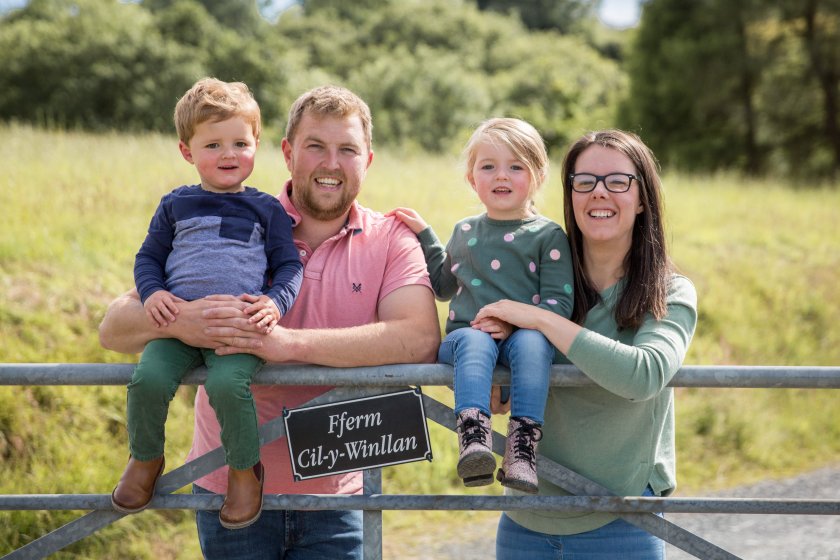
Deep-rooting herbal leys at a Powys farm has been key to maintaining grazing when hot and dry summers have challenged grassland.
As the business seeks to expand its acreage of legumes and herbs, it is trialling a range of establishment methods to identify which are the most efficient and effective.
Eifion Pughe and Menna Williams contract rear dairy heifers on 150 acres at Cilywinllan near Machynlleth.
The March-born animals arrive at seven months old and return to their owner’s farm in their second winter when they are in-calf.
Making the best use of home-grown feed is key to cost control in the business and, ultimately, profitability.
Periods of drought in recent years have put pressure on grass production so two years ago Eifion and Menna first introduced diverse swards with species that have varying rooting depths, properties and drought tolerances.
“We reseeded 15 acres and those 15 acres saved us that summer, they kept growing when the pasture didn’t," Eifion recalls.
“We had to graze on a shorter rotation, 16 days instead of 21, which wasn’t the best management of them but it got us through that summer."
He initially added only plantain to the grass seed mix when he first experimented eight years ago.
But has since included a much more diverse range of species including chicory, yarrow, clover and red, white and berseem clovers, with bespoke seed mixtures formulated by Osian Jones, of Oliver Seeds, to match the needs of the business
Up to 4.5 hectares is reseeded annually. Herbal leys can be tricky to establish and there are different ways of doing it.
To work out which delivers the best result on Welsh farms like Cilywinllan, Eifion and Menna are hosting a Farming Connect trial using different methods.
Three fields have been sown with herbal leys – one after conventional ploughing and two with direct drilling, with one of those fields sprayed off with glyphosate and the other with glyphosate and fulvic acid which allows a lower rate of glyphosate to be used.
Use of a product containing mycorrhizal fungi and rhizobacteria, to aid Eifion and Menna’s goal of reducing inputs and making the leys more drought tolerant, is also being trialled.
Due to the wet conditions in July and August the seed couldn’t be sown until September. “We usually don’t sow anything later than August but we are hoping the leys will take off this spring," says Eifion.
Farming Connect, which is funded by the Welsh government, will disseminate the results of the project with other farmers.
Eifion and Menna feed very little concentrates in their heifer rearing system – only the younger cattle get a small quantity when they are housed in their first winter – as performance comes from grazing and red clover silage.
As well as providing feed at times when they may have had to resort to purchased feed, growing herbal leys has reduced their nitrogen use.
“I haven’t kept records so I don’t know how much less nitrogen we use but the herbal leys need very little," says Eifion.
How herbal leys are managed is key to their performance, he suggests. “They wouldn’t suit a set stocking system because the plants need time to recover between grazing, to have that rest period, or they will die off.
“They need to be rotationally grazed, it doesn’t have to be done with lots of electric fences, just closing off a field for a few weeks would work."
